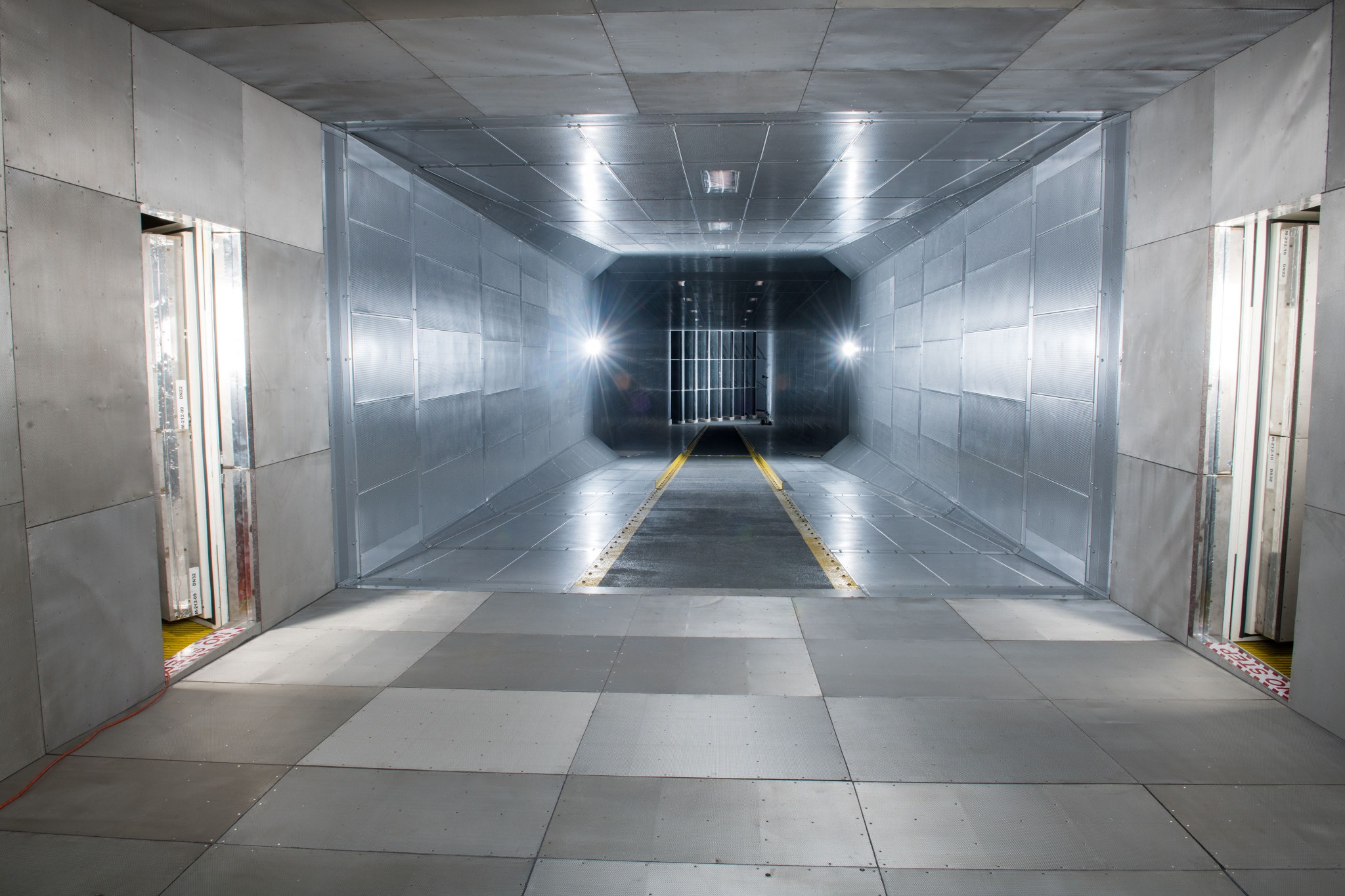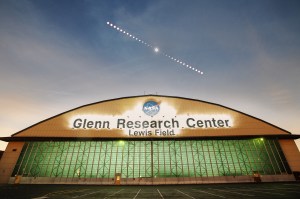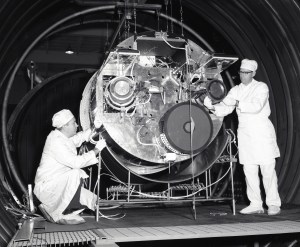
NASA Glenn’s 9-by 15-Low-Speed Wind Tunnel (9 x 15 LSWT) has just completed a series of acoustic improvements that has reduced the facility’s background noise to better characterize today’s new, quieter aircraft engine fans. The tunnel is the only facility in the country that can simulate takeoff, approach and landing in a continuous subsonic acoustic environment.
Built in 1969, the 9×15 LSWT was originally used to support Short Take Off and Vertical Landing aircraft model testing. In 1986, acoustic treatment was added to the test section and, except for maintenance, it has remained essentially unchanged. Meanwhile, engine fan noise has been reduced by about one decibel per year due to technology improvements.
“The primary objective of the 9×15 acoustic improvement project was to reduce the background noise levels in the test section without negatively affecting the test capabilities or flow quality,” says Facility Manager David Stark.
Stark said improvements centered on adding acoustic turning vanes and acoustic baffles in three locations, replacing the test section to reduce noise generated by the original test section flow surfaces, and reshaping and adding acoustic treatment to the diffuser.
Historically, 9×15 acoustic testing was performed at Mach 0.1, which is below true take-off and landing speeds, to take advantage of the lower background noise in the test section at this speed. Open rotors and other modern concept fans, however, will require testing at higher tunnel speeds than Mach 0.1.
“These improvements have brought the 9×15 back to world-class level,” Stark said. “Reducing the background noise in the test section will enable us to continue to support testing of models for engine technology development for decades.”



























